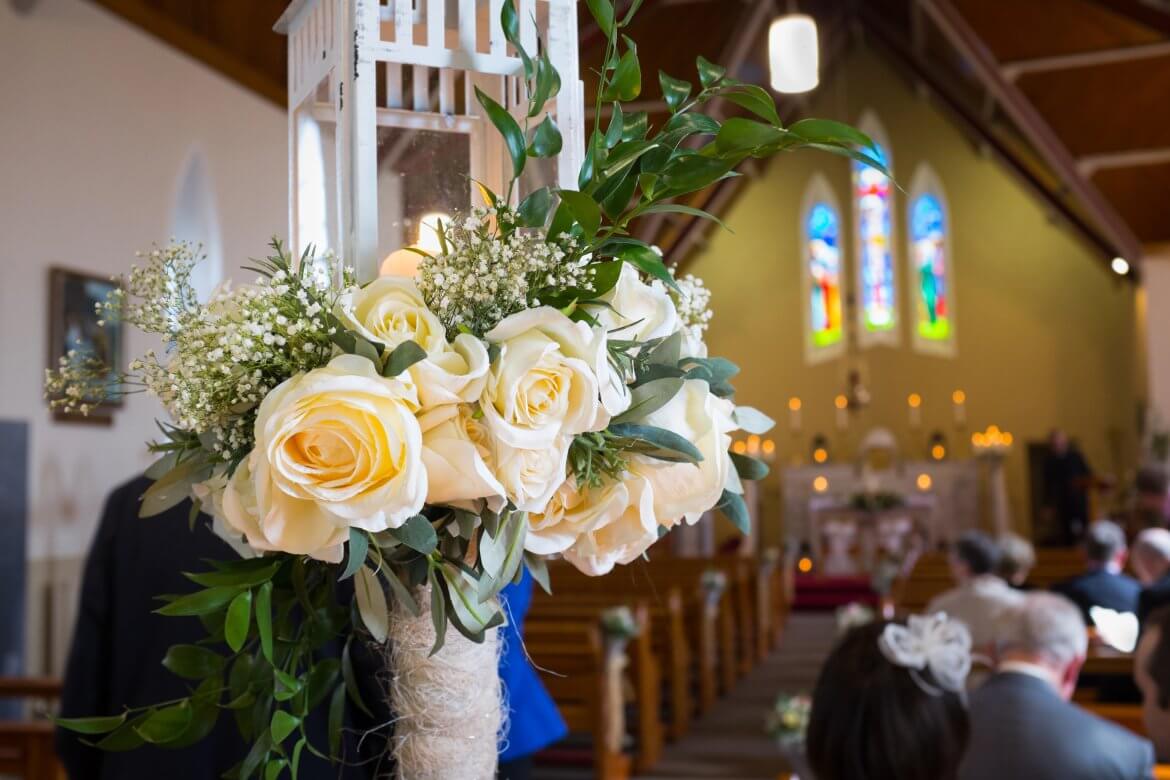Ireland’s wedding traditions blend ancient Celtic customs with modern celebrations, creating ceremonies that are uniquely Irish while adapting to contemporary times. From handfasting to honey wine, here’s a comprehensive look at how the Irish traditionally celebrate marriage.
Traditional Celtic Handfasting
Perhaps the most distinctively Irish wedding tradition is handfasting, a Celtic custom that gave us the phrase “tying the knot.” During this ceremony, the couple’s hands are bound together with ribbons or cords, symbolizing their union. While historically this represented a temporary marriage lasting one year and a day, modern couples incorporate it into their ceremony as a symbolic gesture. Each cord color traditionally carries meaning: white for purity, red for passion, blue for tranquility.
Claddagh Rings
The Claddagh ring, originating from the Galway fishing village of the same name, remains a powerful symbol in Irish marriages. The design features two hands holding a crowned heart, representing love (heart), loyalty (crown), and friendship (hands). Traditionally, when worn on the right hand with the heart pointing outward, it indicates the wearer is seeking love. When the heart points inward, it shows the wearer is in a relationship. On the left hand with the heart pointing inward, it signifies marriage.
The Marriage Morning
Irish wedding mornings often begin with traditional customs. The bride might eat salt, oats, and soil for luck, though this practice has largely fallen out of favor. More commonly maintained is the tradition of placing a sixpence or other silver coin in the bride’s shoe, ensuring financial prosperity for the couple.
Wedding Bells
Church bells play a significant role in Irish wedding traditions, believed to ward off evil spirits and bring good luck. Many couples still incorporate bells into their ceremony or reception, and guests often give small bells as gifts. Modern interpretations include having guests ring small bells after the ceremony or incorporating bell motifs into wedding decorations.
The Wedding Party
Traditional Irish weddings often feature a larger wedding party than typical Western weddings. The role of the “child of honor” – usually a young relative carrying the rings or flowers – holds special significance. Additionally, many Irish couples include their entire family in the ceremony, with multiple generations playing important roles.
The Ceremony
While most modern Irish weddings take place in churches, there’s growing interest in incorporating Celtic ceremonies at historic sites. These often include traditional elements like:
- Reading ancient Celtic blessings
- Drinking from a common Quaich (loving cup)
- Celtic music and instruments
- Gaelic vows (even in otherwise English ceremonies)
Weather Considerations
Irish folklore places great importance on wedding day weather. Rain on the wedding day, while common in Ireland, is actually considered lucky – “wet knot stays tied.” However, high winds are considered unlucky, as they might blow the luck away. Many couples still consult traditional weather signs when choosing their date.
Music and Dancing
No Irish wedding would be complete without traditional music. Contemporary celebrations often feature a céilí band playing traditional Irish dance music, encouraging guests to participate in group dances. The first dance might be to an Irish ballad, and many couples incorporate traditional instruments like fiddles, flutes, and harps into their celebration.
The Wedding Feast
Traditional Irish wedding feasts feature local specialties and customs. Honey mead, a traditional Celtic drink, is often served, referencing the ancient custom of providing newly married couples with enough mead for a month (giving us the term “honeymoon”). Traditional foods might include:
- Irish smoked salmon
- Traditional soda bread
- Colcannon
- Irish stew
- Wedding cake infused with whiskey
Modern Adaptations
While maintaining connections to these traditions, contemporary Irish weddings have evolved. Many couples now choose to blend traditional elements with modern celebrations. For example:
- Having both church and Celtic ceremonies
- Using traditional music alongside contemporary songs
- Incorporating Gaelic phrases into otherwise English ceremonies
- Modern interpretations of traditional decorative elements
The Departure
Traditionally, Irish newlyweds departed their reception to the sound of bells ringing and guests throwing grain or confetti for luck. Today, many couples maintain this tradition but with modern twists, such as biodegradable confetti or sparklers.
Family Involvement
Perhaps the most enduring aspect of Irish wedding traditions is the emphasis on family involvement. Irish weddings traditionally bring together extended families, with multiple generations participating in both the ceremony and celebrations. This focus on family connections remains strong in modern Irish weddings.
Irish wedding traditions offer a rich tapestry of meaningful customs that can be adapted for modern celebrations. Whether couples choose to embrace all traditional elements or select a few meaningful customs to incorporate, these traditions add depth and cultural significance to their special day. The beauty of Irish wedding traditions lies in their ability to evolve while maintaining their essential character – celebrating love, family, and community in distinctively Irish ways.


